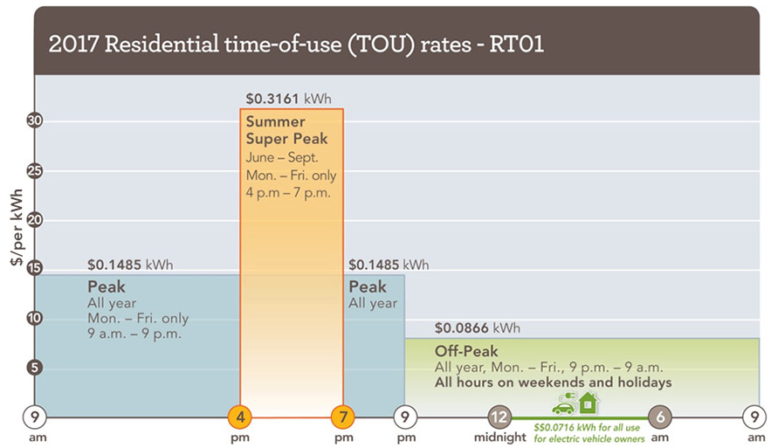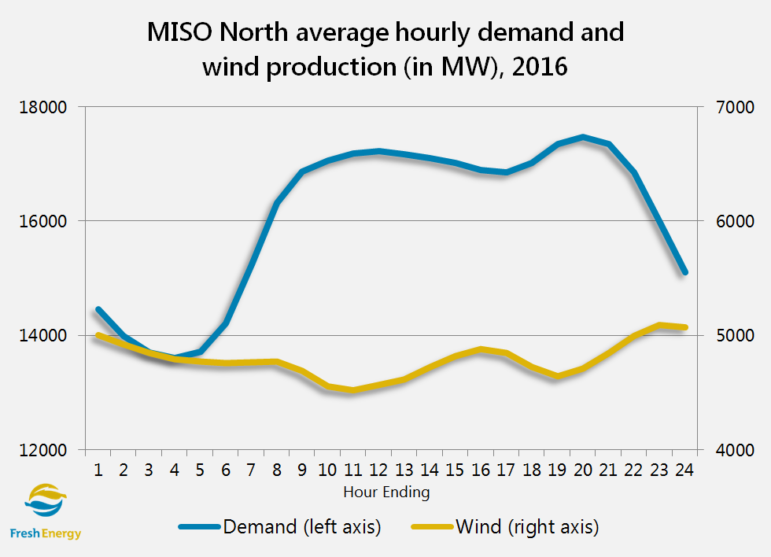
When do you use electricity? If you are like most Minnesotans, you turn up the air conditioner in the late afternoon and run a few appliances when you get home from work. When lots of consumers follow this pattern, it creates a large “peak” demand that is expensive and inefficient. With time-of-use electricity pricing, customers are encouraged to shift consumption away from peak times, reducing stress on the electricity system, decreasing carbon emissions, and saving money in the process!
Xcel Energy is currently developing a time-of-use pricing pilot program, and Fresh Energy will be actively involved in working with Xcel, policymakers, and other stakeholders to optimize the design of the pilot.
When done right, time-of-use electricity pricing creates a win-win for consumers and the environment, saving customers money while also improving the economics of renewable energy.
- The current electricity generation paradigm is inefficient and expensive.
- Switching to time-varying pricing gives consumers more control over their energy bills and reduces costs for everyone.
- Time-varying pricing would also spur the development of more renewable energy by creating more demand for wind energy generated at night.
Electricity is a peculiar commodity because it must be generated exactly as it is consumed. As a result, it costs more to produce electricity during times of high demand—like on a 100° Wednesday in July—than when people are using less—like a 70° Sunday in April. Yet, most people pay the same electric rate all day, every day. This means customers have no financial incentive to shift their consumption to less expensive times.
The current flat rate design makes our electric system inefficient and more expensive than it needs to be. To meet peak demands on the hottest days of the year, utilities have had to make big investments in natural gas “peaker” plants, which only produce power for a few hours and sit idle most of the year. Even though they only run a few hours a year, customers pay for them year-round in their bills.
One way to address this problem is to use time-of-use rates. Under time-of-use pricing, customers pay a higher rate during certain “on peak” hours (when demand is typically the highest) and lower rates during “off peak” hours (when demand is typically the lowest). This encourages customers to shift some usage from high-cost to lower-cost times. Here’s an example of a time-of-use design, from the Sacramento Municipal Utility District:

Time-of-use pricing gives customers more control over their bills. Those who want to save money can shift their consumption out of the peak periods—e.g. by programing their air conditioners to cool the house before 4 PM, waiting until 7 PM to do the laundry, or running the dishwasher overnight. Customers with electric vehicles also get an extra-low rate for charging between midnight and 6 AM. Even customers who don’t choose to adjust their consumption will see savings over time, as other customers’ changes will reduce the need to build expensive peaking plants that only run a few hours a year.
In Minnesota, time-of-use pricing has an additional benefit: it’s great for the environment! The Great Plains have some of the best wind resource in the world and utilities have been purchasing long-term contracts for new wind farms for less than 2¢/kWh. But, while wind is the lowest-cost generation available in Minnesota, wind speeds are not constant, so wind turbines produce more electricity at some times than at others. And, in the upper Midwest, wind production tends to be the highest when demand is lowest. Shifting more load to overnight hours would improve the economics of wind development, which would allow us to add even more cost-effective, job-creating wind energy.

Over the coming months, Fresh Energy will work with Xcel Energy and policy makers to ensure Xcel’s time-of-use pilot program is designed to help both customers and the climate. Stay tuned for updates.

